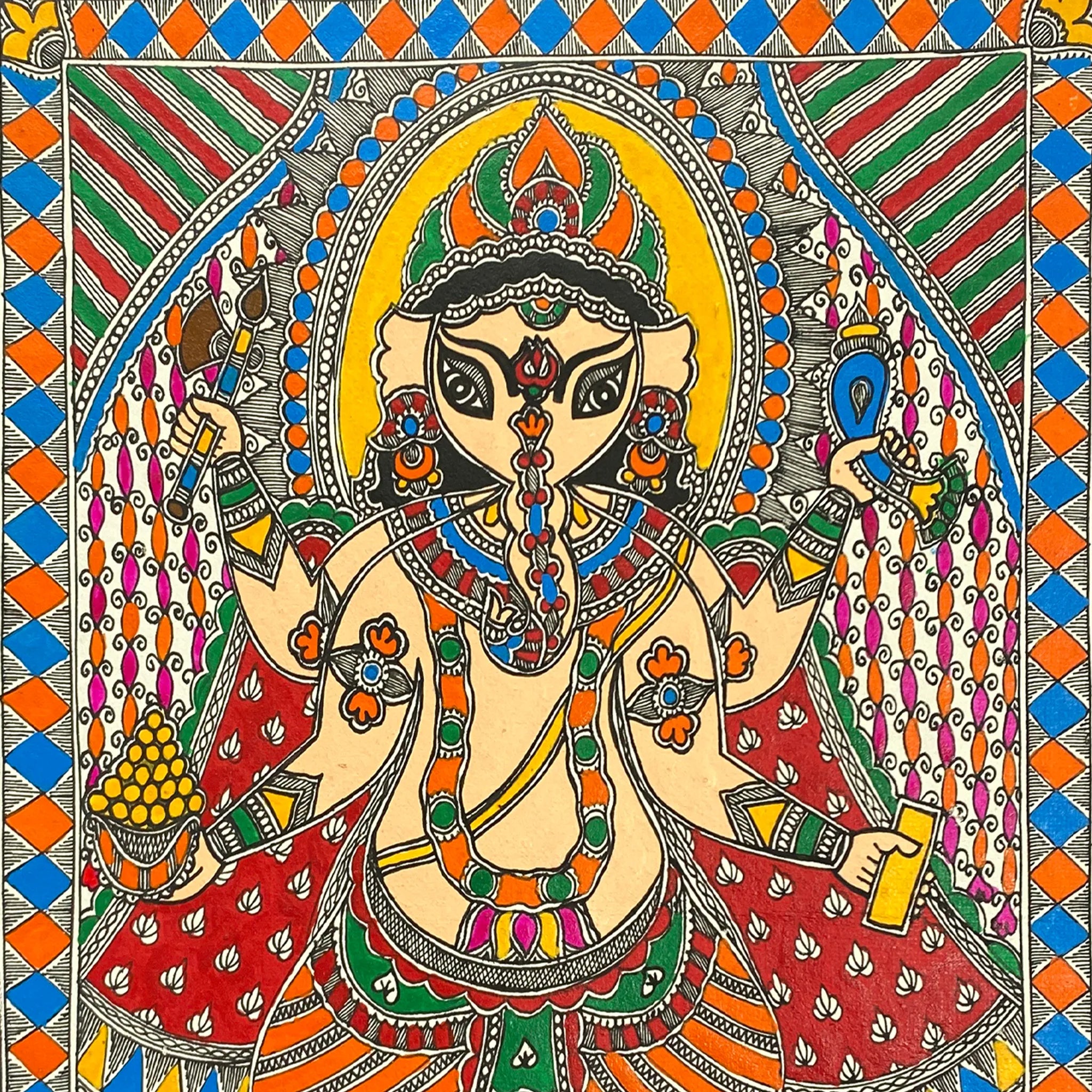Madhubani Paintings Explained

Madhubani Paintings Explained: Dive into the Colorful World of Traditional Indian Art
Madhubani painting, a fascinating art form originating from the Mithila region of Bihar, India, is not just a painting style but a tradition that dates back centuries. This unique form of art, also known as Mithila painting, is characterized by its eye-catching patterns, vibrant colors, and the depiction of mythological and folk themes. Let's explore the captivating world of Madhubani painting, uncovering its history, characteristics, and significance.
The Roots of Madhubani Painting
Madhubani painting emerged from the Mithila region, hence its alternative name, Mithila painting. It is believed that this art form originated during the time of Ramayana, when King Janaka of Mithila commissioned artists to create paintings for his daughter Sita’s wedding to Lord Ram. Traditionally, these paintings were done on the freshly plastered mud walls and floors of huts, but now they are also done on cloth, handmade paper, and canvas.
Characteristics of Madhubani Painting
Madhubani art is easily identifiable by its distinct features:
- **Geometric Patterns**: Almost every Madhubani painting is framed with borders of geometric patterns, adding a layer of symmetry and visual appeal.
- **Vibrant Colors**: Traditionally, the colors used in Madhubani paintings were derived from natural sources. For instance, black from soot, yellow from turmeric, and so on. These natural colors contribute to the earthy and vibrant palette of Madhubani art.
- **Themes**: The paintings often depict Hindu gods and goddesses, natural elements, and scenes from the royal courts and social events. Themes of love, valor, devotion, and fertility frequently recur in Madhubani paintings, reflecting the cultural richness of the Mithila region.
- **No Space Left Empty**: One of the most striking aspects of Madhubani painting is that every inch of the canvas is filled with motifs such as animals, flowers, birds, or geometric patterns, leaving no space empty.

The Significance of Madhubani Painting
Madhubani painting is not just an art form; it's a cultural expression that offers insights into the life, traditions, and beliefs of the people of Mithila. This art form has played a significant role in empowering women artists in the region, as traditionally, women have been the primary custodians and practitioners of Madhubani painting. Over the years, it has evolved but has stayed true to its roots, preserving the traditional techniques and themes.
The Evolution and Modern Day Madhubani
With the advent of globalization and the increasing interest in ethnic art forms, Madhubani painting has seen a resurgence. Artists have started to experiment with new mediums and themes, bringing this traditional art form into the contemporary space while preserving its essence. Today, Madhubani art is not just confined to galleries and museums but has found its way onto apparel, home décor, and even public spaces, celebrated as a symbol of Indian heritage.
Appreciation for Madhubani
Madhubani painting is more than just an art form; it's a living tradition that has managed to transcend geographical boundaries and generations, captivating hearts with its vibrancy and intricacy. Whether you're an art enthusiast or someone exploring cultural art forms, Madhubani painting offers a fascinating glimpse into the rich tapestry of Indian folklore, religion, and social themes.
By exploring and supporting Madhubani painting, we not only appreciate the beauty and skill behind these creations but also contribute to the preservation and growth of this traditional art form. The vibrant world of Madhubani is a testament to the enduring spirit of human creativity, and its journey from the mud walls of rural Indian homes to the global art scene is indeed a story worth exploring and celebrating.
View our excellent Madhubai Art Collection here !!
